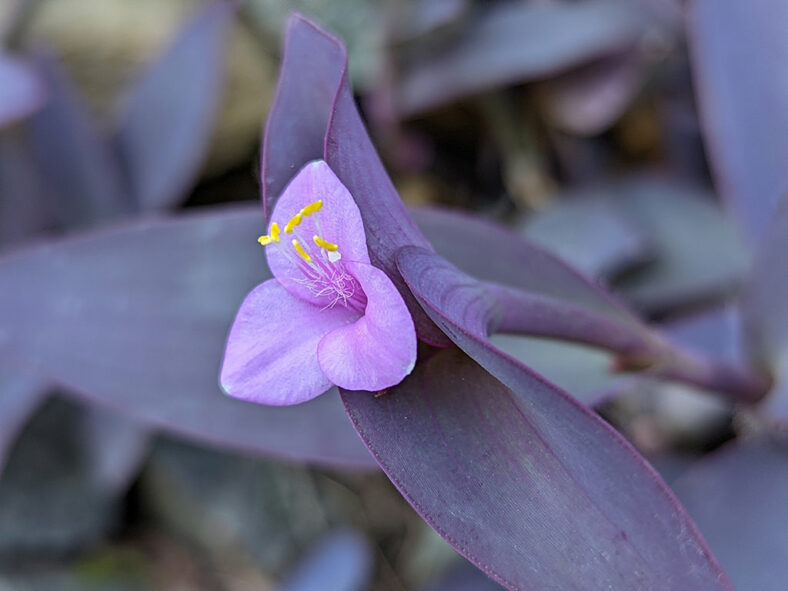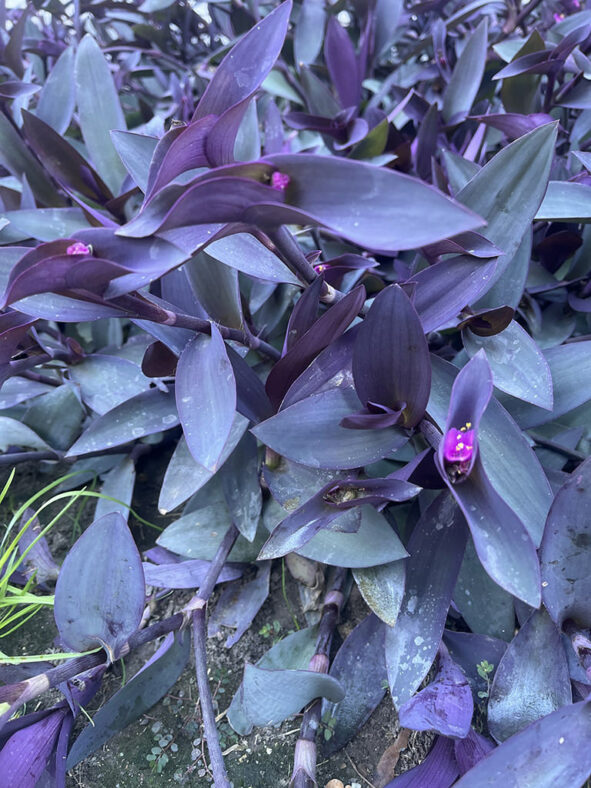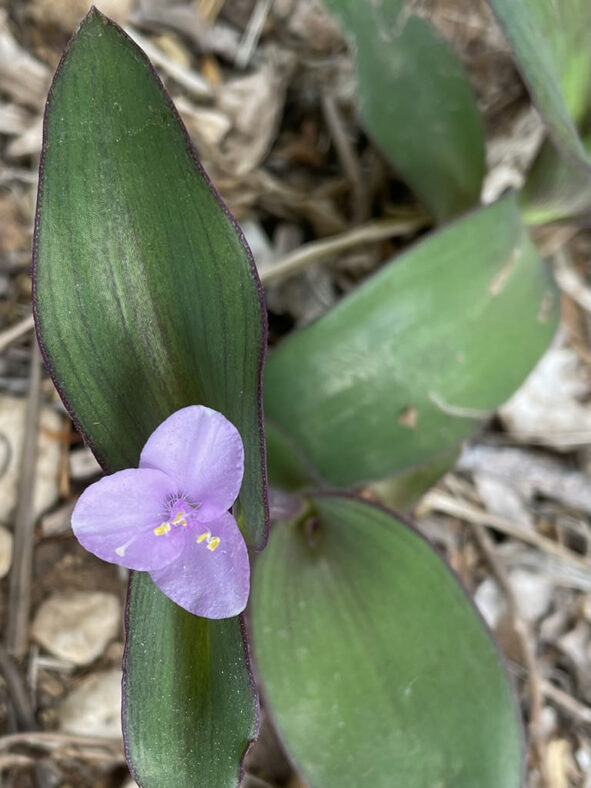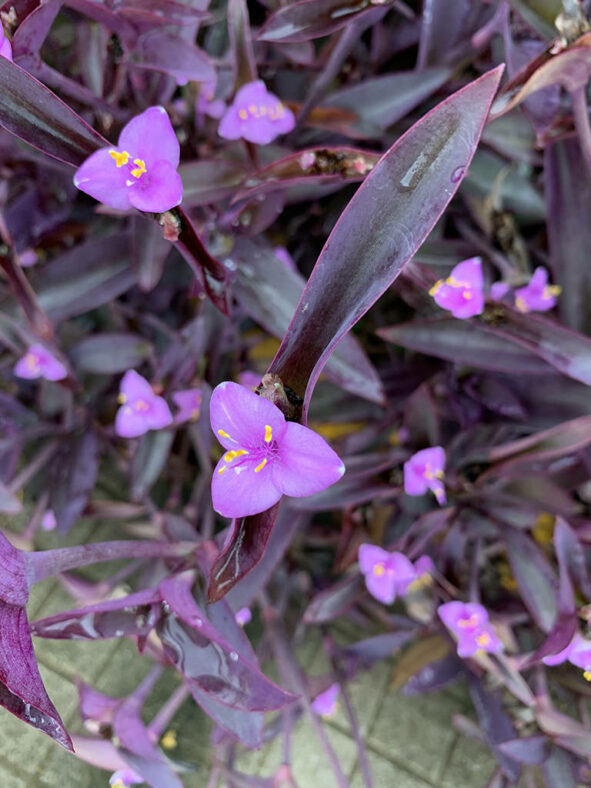Tradescantia pallida is commonly grown as an ornamental and houseplant. The most frequently seen plant is the cultivar Tradescantia pallida 'Purpurea', which has stems and leaves entirely deep purple.
Scientific Name
Tradescantia pallida (Rose) D.R.Hunt
Common Name(s)
Purple Heart, Purple Queen, Wandering Jew (this name is controversial, and some people now prefer to use the alternative Wandering Dude)
Synonym(s)
Setcreasea pallida, Setcreasea purpurea, Tradescantia purpurea
Scientific Classification
Family: Commelinaceae
Subfamily: Commelinoideae
Tribe: Tradescantieae
Subtribe: Tradescantiinae
Genus: Tradescantia
Etymology
The specific epithet "pallida (PAL-lid-duh)" means "pale, pallid" and refers to the paler flowers of this species compared to other Tradescantia.
Origin
Tradescantia pallida is native to Mexico. It occurs in the Gulf Coast region, from Tamaulipas to Yucatan
Description
Tradescantia pallida is a trailing plant with thick but fragile, succulent stems and glaucous green, spirally arranged leaves suffused with purplish violet. The stems are densely branched, decumbent to ascending, and can grow up to 18 inches (45 cm) long. The leaves are slightly fleshy, narrowly oblong, pointed at the tip, folded along the length, measuring up to 6 inches (15 cm) long and 1.2 inches (3 cm) wide. They are usually smooth, occasionally hairy with long soft trichomes, have minutely ciliate margins, and form a sheath around the stem. The leaves turn more vividly purple in full sunlight and during drought.
From midsummer through fall and sporadically at other times, Tradescantia pallida produces small flowers in the axils of the upper leaves. The flowers have three petals that range from white to pink or rose-purple and open only in the morning. They can reach up to 1.2 inches (3 cm) in width. The fruits are smooth capsules measuring up to 0.2 inches (0.5 cm) in diameter and contain tiny pale gray seeds.

How to Grow and Care for Tradescantia pallida
Light: Tradescantia pallida thrives in partial shade, but it can also grow well in sunny areas as long as the soil is kept moist. If the conditions are suitable, this plant can also be grown indoors. Let it spend some time outdoors during the warm spring and summer days.
Soil: To keep the plant healthy, use well-draining soil. A mixture containing regular potting soil, peat moss, and perlite or vermiculite is ideal as it maintains moisture while preventing waterlogging.
Temperature: Tradescantia pallida is happy in average household temperatures ranging from 60 to 80 °F (16 to 27°C). It grows best in USDA Plant Hardiness Zones 9a to 11b, with average minimum winter temperatures ranging from 20 to 50 °F (-6.7 to 10 °C).
Watering: Water the plant regularly, especially if growing in containers, as it likes to be kept fairly moist. Water sparingly in winter.
Fertilizing: Although this plant does not require much fertilizer, a monthly feeding with a liquid fertilizer for indoor plants during the spring and summer will contribute to the production of flowers.
Repotting: For optimal growth, Tradescantia pallida should be repotted every two years or when it has outgrown its pot. Choose a pot that is only slightly larger to avoid overpotting.
Propagation: This plant can be propagated by division, cuttings, or seed. Since it is a vigorous grower, it is a good idea to divide the plant every three years in spring. The stem cuttings will easily root in soil or water in summer or fall, while fall or early spring is the best time to sow the seeds outdoors.
See more at How to Grow and Care for Tradescantia.
Toxicity of Tradescantia pallida
Tradescantia pallida can be mildly toxic to pets if ingested, and its sap can cause skin irritation.
Cultivars of Tradescantia pallida
Links
- Back to genus Tradescantia
- Succupedia: Browse succulents by Scientific Name, Common Name, Genus, Family, USDA Hardiness Zone, Origin, or cacti by Genus
Photo Gallery
Click on a photo to see a larger version.



